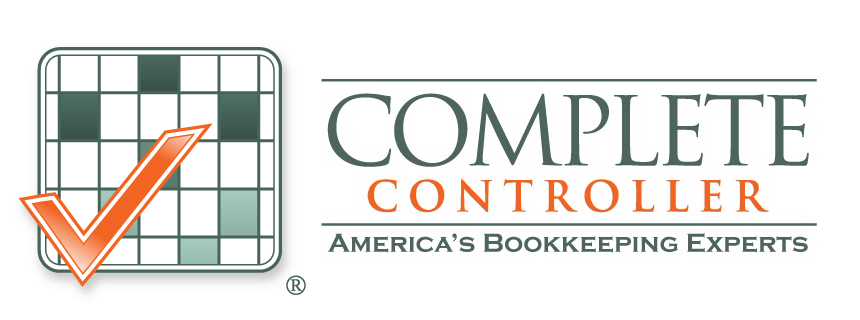Unlocking Success: How Predictive Business Intelligence Transforms SMBs
Predictive business intelligence transforms how small and medium businesses make decisions by leveraging data analytics and machine learning to forecast trends, optimize operations, and drive growth. Unlike traditional reporting that only shows what happened, predictive BI reveals what will happen, giving SMBs the same competitive edge that was once exclusive to large enterprises.
Are you tired of making business decisions based on gut feeling and watching bigger competitors consistently outmaneuver you? You’re not alone. Most SMB owners I work with initially struggle with reactive decision-making, addressing problems after they occur rather than preventing them. The good news? Accessible, affordable predictive tools have changed the game.

What is predictive business intelligence and how does it transform SMBs?
- Predictive business intelligence combines historical data analysis with machine learning to forecast future outcomes, identify patterns, and recommend actions
- It transforms raw business data into visual dashboards showing likely sales trends, inventory needs, and customer behaviors
- SMBs gain enterprise-level insights without enterprise-level IT departments through cloud-based, user-friendly platforms
- It replaces reactive decision-making with proactive strategies based on what will happen rather than what already occurred
- The right implementation creates competitive advantage through better resource allocation, reduced costs, and enhanced customer experiences
The Measurable Benefits of Predictive BI for Growing Businesses
Small businesses that implement predictive business intelligence gain immediate advantages over competitors still relying on gut feelings and spreadsheets. I’ve witnessed this transformation firsthand with our clients at Complete Controller.
Accurate forecasting drives profitability
SMBs using predictive models achieve up to 85% accuracy in sales forecasting, a game-changer for cash flow management. One retailer reduced inventory costs by 30% while still meeting customer demand by predicting seasonal trends. This precision helps you avoid both costly overstocking and revenue-killing stockouts.
Data-driven marketing ROI
Stop wasting marketing dollars on guesswork. 5 essential marketing strategies to help grow your business become significantly more effective when powered by predictive analytics. You can identify which customer segments are most likely to convert, what messaging resonates, and when to deliver it—creating hyper-targeted campaigns that generate measurable returns.
Operational efficiency through automation
Predictive tools identify inefficiencies in your operations that human eyes might miss. AWS research shows that SMBs typically reduce operational costs by 20% through process improvements identified by predictive analytics. One restaurant client automated staff scheduling based on predicted peak times, cutting labor costs while maintaining service quality.
Five Steps to Implement Predictive BI in Your Business Today
The perception that implementing predictive analytics requires data scientists or massive budgets keeps many SMBs from reaping the benefits. Let me share the approach we use with our clients to make adoption straightforward:
Identify your business questions first
Begin with specific questions you need answered, not with technology. Do you need to predict which customers might leave? Which products will sell next quarter? What staffing levels you’ll need? Clear questions drive successful implementation.
Audit andconsolidate your data sources
Most SMBs have valuable data trapped in different systems. From spreadsheets to CRMs, you need to create a unified view before predictive models can work effectively. Start by mapping where your customer, sales, inventory, and financial data lives.
Choose right-sized tools
You don’t need enterprise solutions with enterprise price tags. Tools like Tableau, Microsoft Power BI, and Google Looker offer SMB-friendly pricing with powerful predictive capabilities. Many start at less than $100/month with scalable options as you grow.
Start small with quick wins
Begin with one high-impact use case rather than transforming everything at once. For retailers, this might be inventory forecasting; for service businesses, customer churn prediction. Success in one area builds momentum for broader adoption.
Create a data-driven culture
Technology alone isn’t enough—your team needs to embrace data in daily decisions. Schedule regular “insights meetings” where staff reviews predictive dashboards and discusses actions based on the forecasts.
Real Success: How an E-commerce SMB Used Predictive BI to Outperform
One of our clients, an online specialty foods retailer with 12 employees, provides a perfect case study in predictive BI transformation:
The Challenge:
Despite growing sales, their margins were shrinking due to seasonal inventory miscalculations and ineffective marketing spend. They needed to predict demand patterns without hiring data analysts.
The Solution:
We helped implement a predictive analytics dashboard that consolidated data from their e-commerce platform, advertising accounts, and inventory management system. The system began forecasting:
- Which products would see demand spikes based on seasonal patterns
- Which customer segments were likely to make repeat purchases
- When inventory replenishment should occur to maintain optimal stock levels
The Results:
Within six months, they achieved:
- 22% reduction in marketing costs while maintaining the same revenue
- 15% improvement in gross margin through better inventory management
- 28% increase in repeat customer rate through predictive targeting
This success came without adding headcount or massive technology investments—just smarter use of existing data.

Overcoming Common Predictive BI Implementation Challenges
When small businesses struggle with predictive analytics, it’s usually for predictable reasons. Here’s how to overcome the most common obstacles:
Data quality issues
Garbage in, garbage out applies perfectly to predictive models. Small business bookkeeping: 9 tips and tricks lays the foundation for clean financial data—essential for accurate forecasting. Implement data validation rules and regular audits to maintain quality.
Skill gaps among staff
You don’t need to hire data scientists, but your team needs basic data literacy. Create simple training modules on interpreting dashboards and understanding prediction confidence levels. One hour of training per week can transform capability over a quarter.
Integration complexity
Many SMBs abandon implementation when facing technical hurdles connecting different systems. Start with cloud-based tools that offer pre-built connectors to popular platforms like QuickBooks, Shopify, or Salesforce to minimize integration headaches.
Trust in predictions
Stakeholders who’ve relied on intuition may resist trusting algorithms. Build confidence by starting with modest predictions, tracking accuracy, and celebrating when the predictions prove correct. Success builds trust over time.
Choosing the Right Predictive BI Tools for Your SMB
The predictive analytics market offers hundreds of options, creating confusion for SMBs. Here’s my framework for making the right choice for your specific needs:
For beginners: Microsoft Power BI
- Strengths: User-friendly interface, built-in AI capabilities, familiar Excel-like features
- Weaknesses: Limited advanced customization
- Best for: SMBs already using Microsoft products, companies needing basic predictive capabilities
- Pricing: Starts at $10/user/month, making it one of the most affordable options
For growth-stage companies: Tableau
- Strengths: Powerful visualizations, robust predictive modeling, extensive training resources
- Weaknesses: Steeper learning curve, higher price point
- Best for: Data-driven organizations ready to make deeper investments in analytics
- Pricing: From $70/user/month for full predictive capabilities
For E-commerce specialists: Looker (Google)
- Strengths: Deep e-commerce analytics, integration with Google marketing tools
- Weaknesses: Works best within Google ecosystem
- Best for: Online retailers, digital-first businesses
- Pricing: Custom pricing based on data volume
Compare all your options thoroughly before committing to a platform. The Business intelligence tools comparison – Investopedia provides an excellent starting point for evaluating features against your requirements.
Future-Proofing: Where Predictive BI Is Heading Next
The predictive analytics landscape is evolving rapidly. Understanding these trends helps ensure your implementation remains relevant:
AI-powered automation
The next generation of tools will automatically identify patterns without human direction, making predictions even more accessible to non-technical users. Look for platforms with “augmented analytics” features.
Natural language interfaces
Instead of building complex reports, you’ll simply ask questions like “What will my Q4 sales be in the Northeast region?” and receive instant predictive responses.
Embedded predictions
Predictive capabilities are becoming integrated directly into business applications. Your accounting software will automatically forecast cash flow; your CRM will predict which leads are most likely to convert.
Edge computing for real-time prediction
Faster predictions based on immediate data will enable split-second decisions, especially valuable for retail and service businesses responding to customer behavior.
Conclusion: Your Predictive BI Action Plan
Predictive business intelligence has moved from luxury to necessity for SMBs that want to thrive. You no longer need the resources of an enterprise to benefit from advanced analytics—just the right approach and tools.
Start your journey by identifying one business question where better prediction would significantly impact your bottom line. Then evaluate the data you have available and select an appropriate tool to begin extracting insights.
Remember that implementation is iterative—you’ll refine your models and expand your use cases as you gain experience. The companies that start now will have an insurmountable advantage over those still relying on rearview-mirror analytics a year from now.
Ready to transform your business with predictive insights? Visit CompleteController.com to learn how our team can help you implement data-driven financial strategies that power more accurate forecasting and smarter business decisions.

FAQ
How much does it typically cost for an SMB to implement predictive business intelligence?
Implementation costs vary widely but have decreased dramatically in recent years. Cloud-based platforms typically range from $10-100 per user monthly, with minimal upfront investment. Many SMBs achieve positive ROI within 3-6 months through improved decision-making and operational efficiencies.
Do I need data science expertise on my team to use predictive analytics?
No. Modern tools offer pre-built predictive models and user-friendly interfaces designed for business users. While data literacy is helpful, you don’t need specialized data science skills to benefit from basic predictive capabilities.
How accurate are the predictions from these BI tools?
Accuracy varies based on data quality, model selection, and business complexity. Well-implemented systems typically achieve 70-85% accuracy in forecasting, which significantly outperforms gut-based decisions. Accuracy improves over time as models learn from outcomes.
What types of data do I need to make predictive analytics effective?
At minimum, you need historical transaction data, customer information, and operational metrics. The more data points you can provide—including external factors like economic indicators or weather patterns—the more accurate your predictions become.
How can predictive BI help with cash flow management specifically?
Predictive analytics forecasts incoming revenue and outgoing expenses with greater accuracy, highlighting potential cash crunches before they occur. It can predict customer payment timing, identify seasonal fluctuations, and optimize inventory purchases to preserve cash.
Sources
- Ascend Analytics. “Business Intelligence for Small and Medium-Sized Enterprises.” Ascend Analytics, May 2024.
- AWS Blog. “How Business Intelligence Can Help Small and Medium Businesses Stay Competitive.” AWS, May 2023.
- CorEthos. “Leveraging Data Analytics for Smarter Business Decisions.” CorEthos, 2024.
- US Chamber of Commerce. “How Business Intelligence and Analytics Benefit Businesses.” US Chamber, June 2022.
- Salesforce. “How to Build a Small Business Intelligence Strategy in 7 Steps.” Salesforce Blog, May 2025.
 About Complete Controller® – America’s Bookkeeping Experts Complete Controller is the Nation’s Leader in virtual bookkeeping, providing service to businesses and households alike. Utilizing Complete Controller’s technology, clients gain access to a cloud platform where their QuickBooks™️ file, critical financial documents, and back-office tools are hosted in an efficient SSO environment. Complete Controller’s team of certified US-based accounting professionals provide bookkeeping, record storage, performance reporting, and controller services including training, cash-flow management, budgeting and forecasting, process and controls advisement, and bill-pay. With flat-rate service plans, Complete Controller is the most cost-effective expert accounting solution for business, family-office, trusts, and households of any size or complexity.
About Complete Controller® – America’s Bookkeeping Experts Complete Controller is the Nation’s Leader in virtual bookkeeping, providing service to businesses and households alike. Utilizing Complete Controller’s technology, clients gain access to a cloud platform where their QuickBooks™️ file, critical financial documents, and back-office tools are hosted in an efficient SSO environment. Complete Controller’s team of certified US-based accounting professionals provide bookkeeping, record storage, performance reporting, and controller services including training, cash-flow management, budgeting and forecasting, process and controls advisement, and bill-pay. With flat-rate service plans, Complete Controller is the most cost-effective expert accounting solution for business, family-office, trusts, and households of any size or complexity.
 Reviewed By:
Reviewed By:




